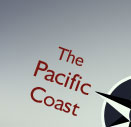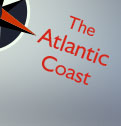



| Home > Browse Selected Topics > Shipwreck Investigations | Franšais | |
This archived Web page remains online for reference, research or recordkeeping purposes. This page will not be altered or updated. Web pages that are archived on the Internet are not subject to the Government of Canada Web Standards. As per the Communications Policy of the Government of Canada, you can request alternate formats of this page on the Contact Us page.
The Atlantic CoastIn the shipping lore of the North Atlantic, Sable Island is synonymous with wrecks and disasters. This small, crescent-shaped island, about 300 kilometres southeast of Nova Scotia, has been the scene of hundreds of shipwrecks, the first recorded in the 16th century, the last one about sixty years ago. Countless others have undoubtedly gone unrecorded. The island, never more than 40 or 50 kilometres in length and less than 2 kilometres wide, lies near the busy shipping lanes to and from the North American coast. Its rough and treacherous waters have claimed mariners and immigrants alike with distressing regularity. The island is surrounded by dangerous currents and is often shrouded in fog. As shipping between Europe and Halifax, and various American ports, increased in the 18th century, the island was avoided if at all possible. However, in an era when determining location was not an exact science, ships often ran aground on the sandbars and were wrecked by vicious waves. With little or no shelter on the island, shipwreck survivors had little hope for rescue on this well-known, but remote finger of land. Hundreds of men, women and children have perished because of Sable Island -- the total number of casualties is impossible to calculate. In 1801, the British government established the Sable Island Humane Establishment with a small number of permanent residents, and while they could do nothing to prevent shipwrecks, survivors now had a good chance of being rescued and returned to the mainland. Responsibility for the station was assumed by the Canadian government in 1867 and soon after, two lighthouses were constructed on the island. Government ships called regularly at the island and by the 1890s, communication on the island itself was improved with the introduction of telephones, allowing life-saving crews and lighthouse keepers to co-ordinate search and rescue operations. Advances in navigational equipment reduced the frequency of shipwrecks and those who found themselves stranded on the island were well cared for by the staff of the life-saving station. Shipping disasters and loss of life, however, remained a fact of life throughout the latter half of the 19th century, though the dangerous waters of Sable Island, long a source of peril to ships, were slowly being tamed. Fewer and fewer ships were wrecked on the island after the First World War and the last major disasters took place in the 1940s. In the late 1950s, the government closed the Humane Establishment and the resident light-keepers were eventually removed in favour of automation. Modern technology now ensures that ships avoid the island and its deadly sandbars.
ReferencesAppleton, Thomas E. Usque ad Mare: A History of the Canadian Coast Guard and Marine Services. Ottawa: Queen's Printer, 1969. Armstrong, Bruce. Sable Island: Nova Scotia's Mysterious Island of Sand. Toronto: Doubleday Canada Ltd., 1981. Campbell, Lyall. Sable Island Shipwrecks: Disaster and Survival at the North Atlantic Graveyard. Halifax: Nimbus Publishing, 1994. De Villiers, Marq, and Shirley Hirtle. A Dune Adrift: The Strange Origins and Curious History of Sable Island. Toronto: McClelland and Stewart, 2004. Sable Island. Canada's Digital Collections Program, Industry Canada. http://epe.lac-bac.gc.ca/100/205/301/ic/cdc/sable/default.htm (accessed October 5, 2005). |